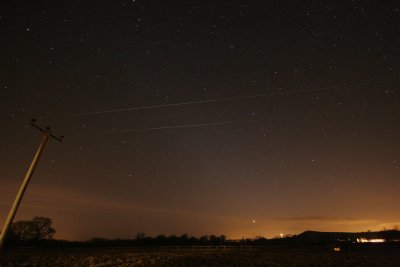
|
Only a month past the winter solstice and the ecliptic is already at a steep enough angle for the Zodiacal Light to clear the lower level haze.
The crescent moon is about to set, followed by Jupiter.
The faint cone of Zodiacal Light stretches from them up to the left at about 45 degrees.
18:48 UT on 17th January 2010.
Sun 20.8 degrees below horizon.
|
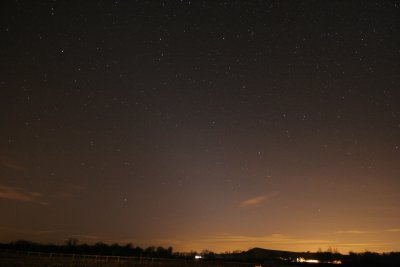
|
Just before the end of astronomical twilight the sky is dark enough and more of the cone is visible.
Unfortunately the brightest part is completely obscured by light pollution.
18:43 UT on 1st February 2010.
Sun 16.9 degrees below horizon.
(Astronomical twilight ends with the Sun 18 degrees below the horizon)
|
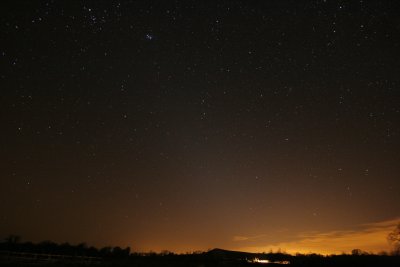
|
The sky only cleared after the end of twilight so this was taken later than I would have liked, losing 5 degrees of the brighter part of the glow.
The ecliptic is now at a steeper angle, and is gradually moving to the right as spring approaches.
19:42 UT on 14th February 2010.
Sun 22.7 degrees below horizon.
|
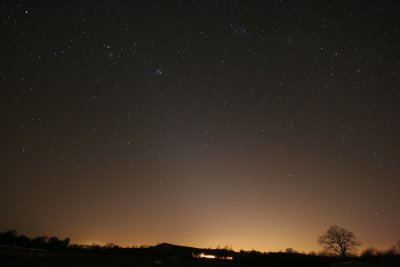
|
A fairly transparent night allowed the Zodiacal Light to show up despite the skyglow to the west.
The northward movement and increasing steepness of the ecliptic is now quite clear after 6 weeks.
19:39 UT on 4th March 2010.
Sun 17.5 degrees below horizon.
|
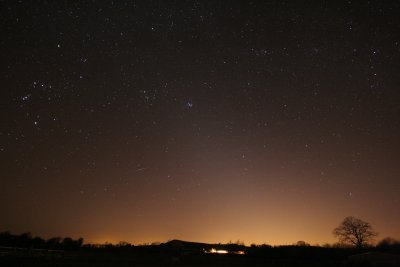
|
The Pleiades are now in the Zodiacal Light and it won't be long before the Milky Way starts to interfere.
19:56 UT on 14th March 2010.
Sun 16.7 degrees below horizon.
|
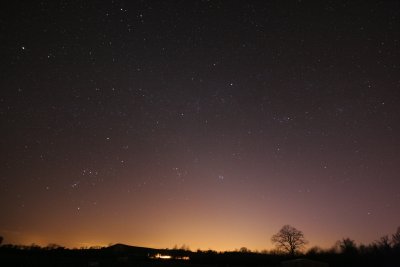
|
Top end of zodiacal light in Milky Way and brighter parts in light pollution plus the last hint of twilight.
It needs a bit of averted imagination to see anything now!
20:33 UT on 7th April 2010.
Sun 15.6 degrees below horizon.
|
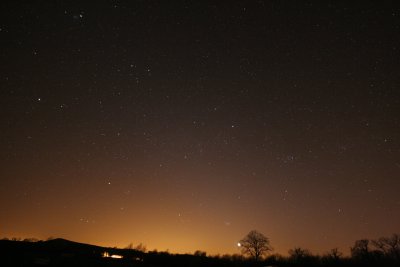
|
Taken at the end of astronomical twilight.
Zodiacal light is barely detectable, even the thin part of the Milky Way spoils the contrast.
21:13 UT on 16th April 2010.
Sun 17.9 degrees below horizon.
|